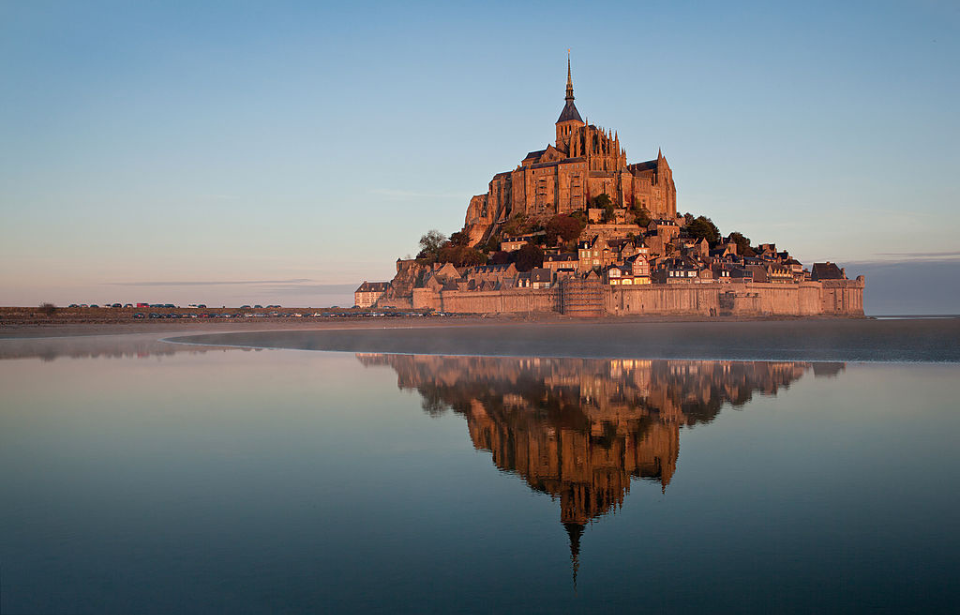During the Second World War, Mont-Saint-Michel was occupied by German soldiers, making it a highly-visited destination for the enemy. For four years, the French were forced to share the rock island with the Germans, and when liberation finally came, they rejoiced in the arrival of the Allies.
History of Mont-Saint Michel
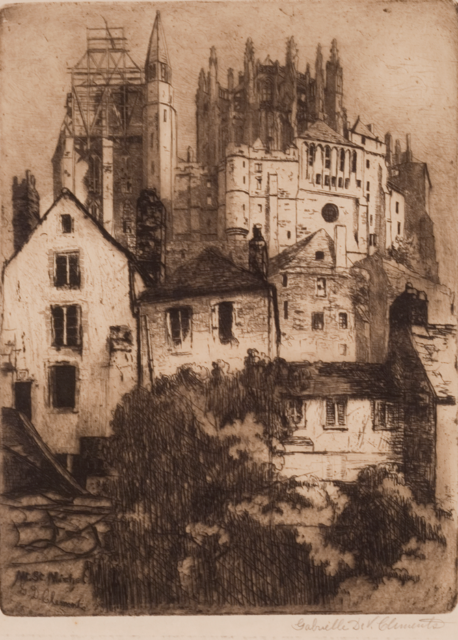
Mont-Saint-Michel is a medieval monastery village located just off of France’s northwestern coast. It’s a several hundred-acre rock island that’s accessible by foot during low tide, when the sandy bank connecting the walled city to the mainland becomes exposed. When the tides are high, however, the fortress becomes isolated.
Legend says that, during the 8th century, Aubert of Avranches, the nearby village’s bishop, was visited by the Archangel Michael, who told him to build a church on the rock island. He had a monastery constructed, which became one of the vital components of the village built around it.
Throughout history, Mont-Saint-Michel has been the site of several key events. It fell under Breton rule during the Viking era, and the island’s monastery vocalized its support to William the Conqueror in his claim to the English throne. It also saw action during the Hundred Years’ War, with the English forces conducting several failed assaults on its fortifications.
While the pilgrimage to the island has long been a beloved venture, Mont-Saint-Michel’s unique location has made it a popular tourist spot for centuries.
Under German occupation during World War II
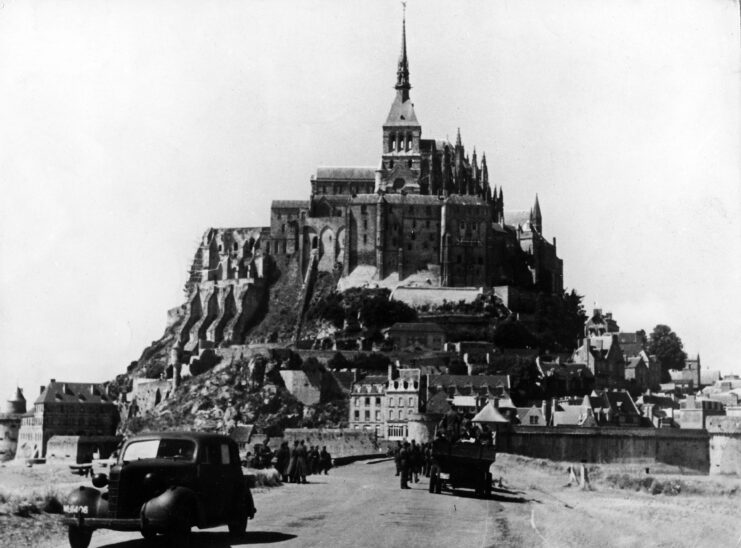
German soldiers marched into Mont-Saint-Michel on June 18, 1940, just days before the French government chose to surrender. After arriving, they set up several operations, including a permanent aircraft tracking station perched within the St. Aubert abbey spire. There, they prepared for Operation Sea Lion, the proposed invasion of Britain.
Soldiers were brought to the village daily, but there were a handful who lived there full-time. For the surrounding villagers, their presence was unwanted and disruptive.
Despite their official occupation of Mont-Saint-Michel, the Germans made no attempt to fortify the monastery. During this time, the German Armistice Commission recognized the historical importance of the church, but this didn’t stop the local population from being weary of their occupiers.
To try and protect the artifacts housed within the monastery, the French chose to move them to the town of Saint-Lô. They later came to regret this. While St. Aubert remained untouched during World War II, Saint-Lô was decimated by a number of severe Allied bombardments that destroyed the artifacts they’d worked so hard to protect. The destruction was so severe that the French commune became known as the “Capital of the Ruins.”
Mont-Saint-Michel became a German tourist hotspot
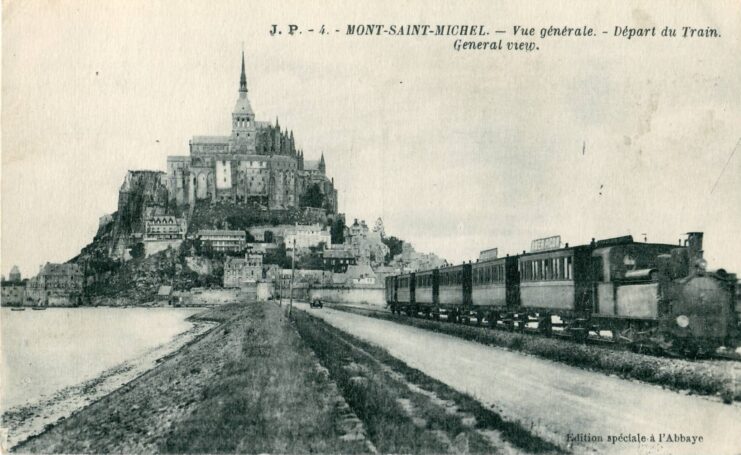
Mont-Saint-Michel became a popular destination for off-duty German troops while the Wehrmacht occupied it. While the French population were still granted access, the German administration set up several hurdles that made it difficult for French people to gain permission for visits.
During the four-year occupation of Mont-Saint-Michel, approximately 325,000 Germans visited. Comparatively, a mere 1,000 French people were recorded to have visited the rock island in that same period.
Three men ‘liberated’ Mont-Saint-Michel
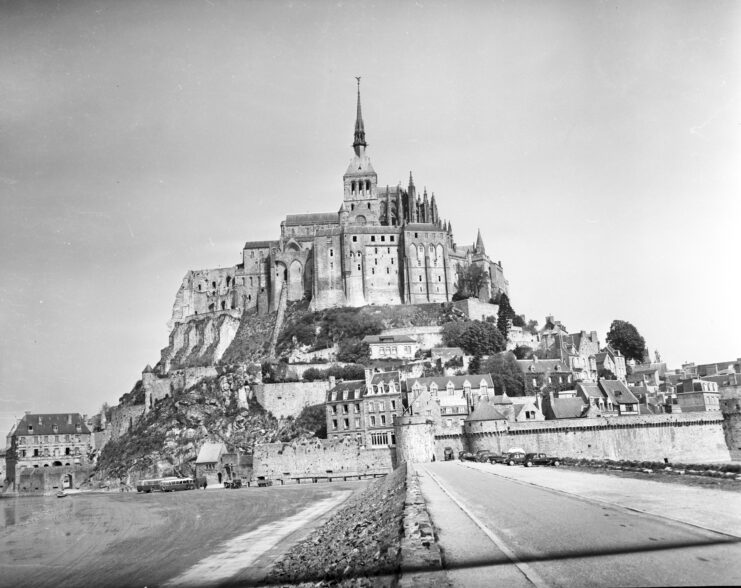
Following D-Day, the German occupation of Mont-Saint-Michel changed. Word of the Allied landings spread quickly, and the troops who’d fled the battlefield stopped at the still-occupied rock island to rest. They couldn’t stop for long, however, and they were forced to retreat further inland to more fortified positions.
The frustrations of the German forces on D-Day was felt in Mont-Saint-Michel. A particularly upset soldier even fired his machine gun at the statue of founding bishop St. Aubert atop the church.
Following the completion of Operation Cobra at the end of July 1944, the Germans surrendered Mont-Saint-Michel. On August 1, three men in a Jeep drove to the rock island. Pvt. Freeman Brougher with Headquarters Company, 72nd Public Service Battalion, accompanied by reporters Gault MacGowan and Paul Holt, became the first Allied soldier to enter.
Brougher and the two reporters’ arrival marked the end of over four years of German occupation. MacGowan reported that the locals’ attitude had completely changed. “We saw them go into a hysterical delirium of joy,” he said. “No sooner did the magic words go around, ‘Les Americans,’ than folks came running from every direction.”
Locals dealt with collaborators
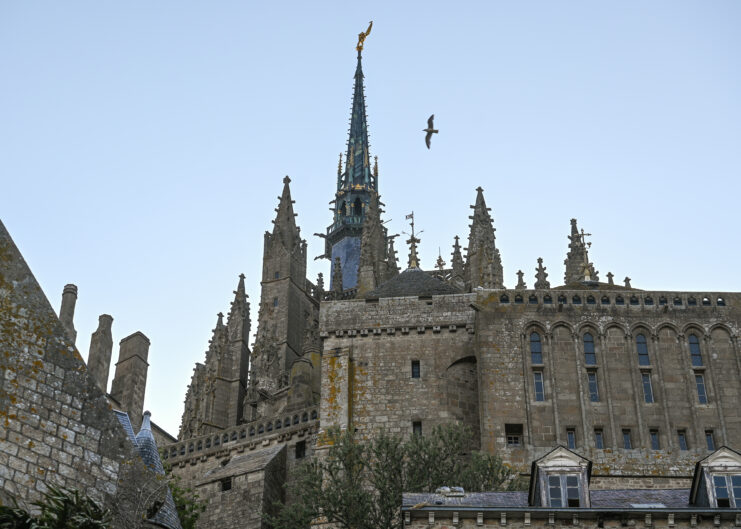
There were still a few German soldiers in Mont-Saint-Michel when the Allies arrived; they were too exhausted to flee or put up a fight. They were arrested immediately, as were the members of the French population who’d aided in the German occupation.
The villagers were so happy to have been liberated that they took it upon themselves to deal with those who’d collaborated with the Germans. Men were locked in St. Aubert’s abbey, which was temporarily turned into a prison – the first time it was used as such since the French Revolution.
Women fared much worse, with the local population ripping their clothes off and beating them with sticks. Their torment was so severe that Brougher and the reporters had to push the mayor to step in and subdue the crowds until the appropriate authorities arrived to deal with them.
More from us: Before He Was Herman Munster, Fred Gwynne Served With the US Navy During World War II
The final act of war to involve Mont-Saint-Michel came a few days after the island’s liberation. Overhead, a German aircraft lost control and crashed just 200 meters from the medieval chapel.
